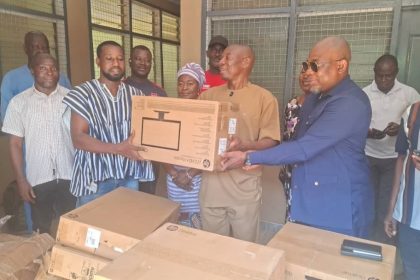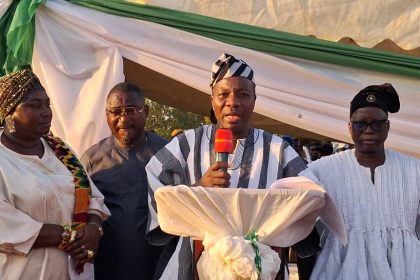Dr A. Ofori Quaah, a Life Member of the Society of Exploration Geophysicists (USA), has called for educating citizens on earthquake preparedness, warning that geological processes behind past tremors remain active.
He explained that the Coastal Boundary Fault, identified in his 2000 research, runs about 22 kilometres parallel to Ghana’s coastline, from the Ivorian border through Abidjan to Keta, where it splits into several minor faults. Although it has been dormant for a long time, its next movement could trigger a tsunami.
“In the 1939 earthquake, fishermen at sea reported experiencing what they termed a ‘minor disturbance of the sea’. Next time, it may not be minor,” he cautioned.
According to Dr Quaah, seismology teaches that “the longer it has been since the last major earthquake, the closer it is to the next one.” Every earthquake elsewhere in the world, he added, is a reminder to other earthquake-prone regions that they could be next.
1939 earthquake and future risk
Ghana’s last major quake occurred on June 22, 1939, around 7 pm, striking Accra and its environs. At the time, Accra’s population was about 77,000, and 22 people lost their lives – 0.028 per cent of the population.
“If that figure is extrapolated to today’s population of about two million, the apocalyptic scenarios begin to emerge,” he said.
He stressed that earthquakes themselves do not kill, but poorly built structures do. “If a Magnitude 8.5 earthquake happens in the Sahara Desert, it will be recorded by seismometers worldwide but cause little harm. Here, where structures are erected without much thought for their impact on the environment, the story will be different.”
Ghana as an earthquake country
Dr Quaah, a former Chairman of the Geological Disasters Sub-Committee of the National Disaster Management Organisation (NADMO), said earthquakes in Ghana are infrequent but destructive. Over the past 600 years, towns such as Axim, Takoradi, Elmina, Accra, and Ho have suffered significant damage from major quakes.
He noted that historical records show Ghana is overdue for another major event by about 20 years. “It is not a matter of if, but when. Last Sunday’s M6.0 earthquake in Afghanistan should be a reminder,” he said.
Providing historical context, he pointed out that in 1939, eight global locations – including Turkey, Chile, Peru, Japan, and the then Gold Coast – all experienced major earthquakes ranging from Magnitude 7.2 to 8.3. By 2023, all those locations, except Ghana and Turkey, had experienced what seismologists call “return events.”
“In Ghana, we are experiencing both ‘seismic time and space gaps.’ The Axim-Elmina stretch has not seen a major quake in 600 years, and apart from minor tremors in the past 56 years, the Ho–Nyanyanu–Accra triangle has not experienced any major one since 1939,” he explained.
“All the geological processes that led to past events are still ongoing. As surely as night follows day, another will come someday,” he warned.
Far-reaching impacts
For peculiar geological reasons, earthquakes in Ghana tend to cause shaking at long distances from the epicentre. The 1939 quake caused Intensity III tremors in Pretoria, South Africa, Intensity IV in Port Harcourt, Nigeria, and significant effects as far as Ouagadougou.
Dr Quaah also expressed concern over Ghana’s disaster management capacity. He recalled that during the collapse of the Melcom Supermarket in Accra, rescue efforts were hampered by crowds besieging the site, blocking access to the injured. A similar situation occurred after the June 2015 floods.
Aftershocks and preparedness
He reminded Ghanaians that earthquakes are usually followed by months of aftershocks. The 1939 event was followed by 13 months of tremors, sometimes five or six per day, with magnitudes up to 4.5. Even the relatively small Magnitude 4.9 quake of March 6, 1997, produced 22 aftershocks over four weeks.
“Should a major earthquake occur in southern Ghana tomorrow, how will companies and institutions in high-rise buildings cope with evacuating three or four times a day due to aftershocks? Do they conduct simulation exercises? Where do staff assemble, considering the overcrowding we see daily on our roads?” he asked.
He urged institutions to incorporate Business Continuity Planning, arguing that the COVID-19 pandemic exposed Africa’s lack of emergency preparedness.
Call to action
While earthquakes cannot be predicted, Dr Quaah suggested schools and households monitor visible cracks in buildings, which could serve as warning signs. He said he would gladly work with young science enthusiasts on such monitoring projects.
“One of the earliest English proverbs I learnt in Class 1 was, ‘Time and tide wait for no man.’ What will it take to begin to act on our situation?” he asked.
GNA






